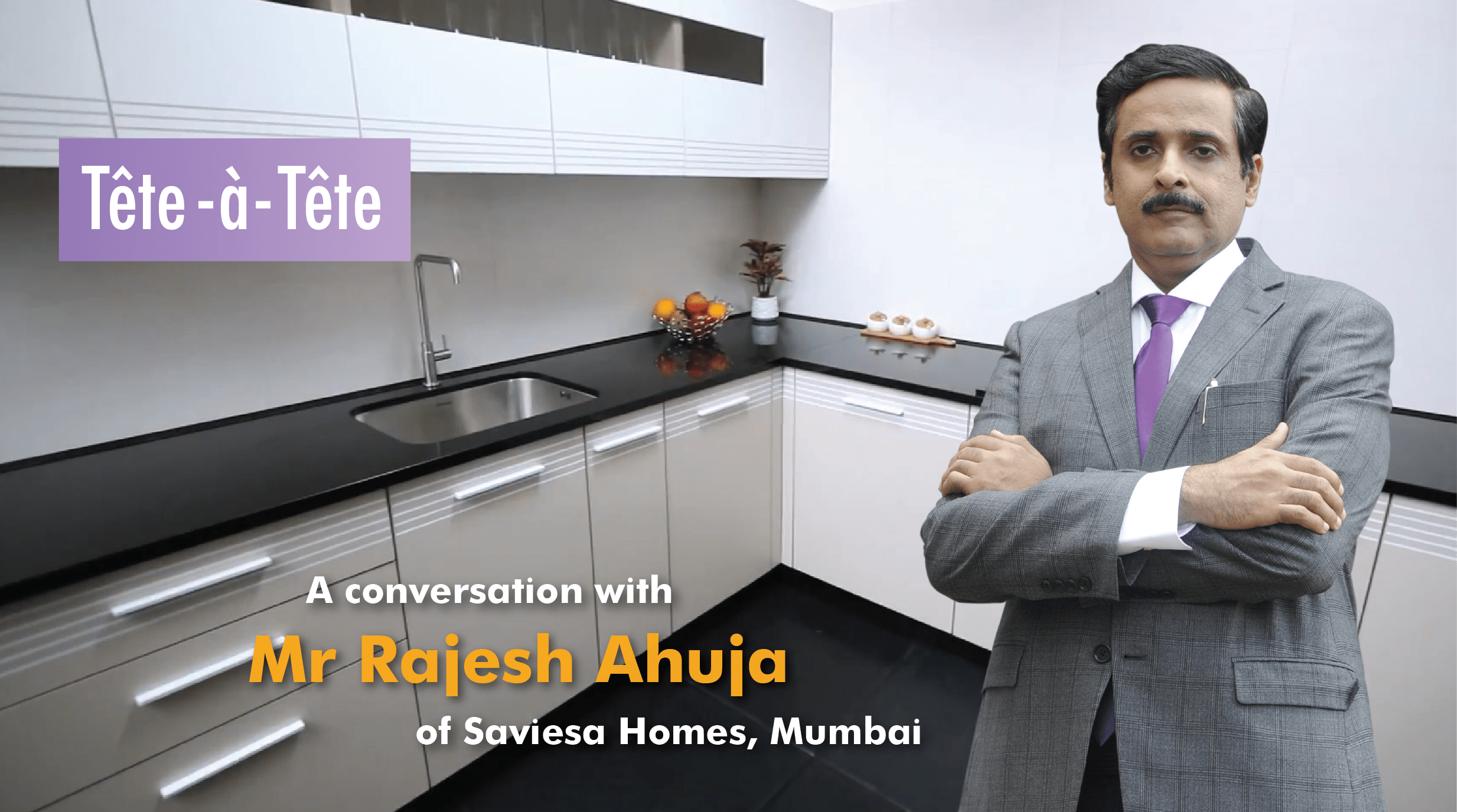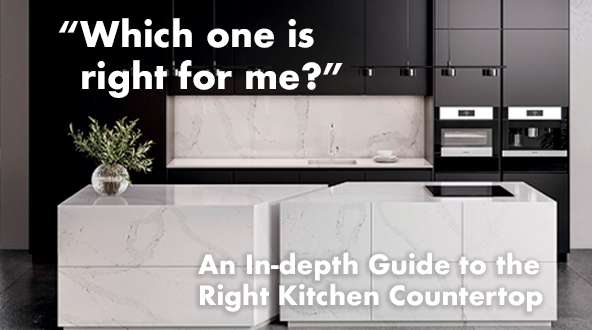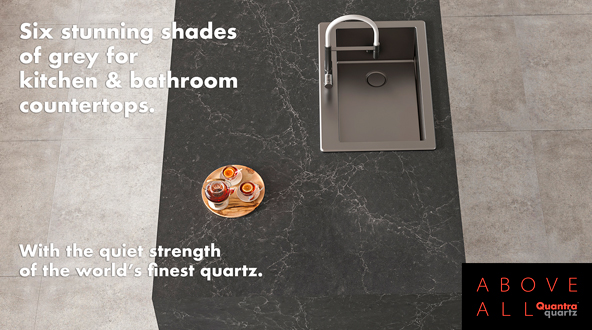Some Surprising Ways Kitchen Design Can Impact Our Health and Wellbeing
Aug, 2022 | All,
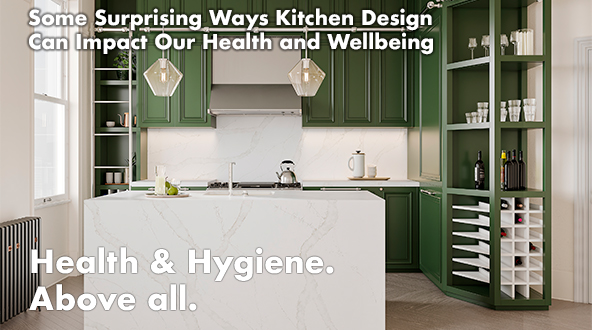
A few simple tweaks can make a huge difference!.
We all know a beautifully-designed kitchen looks fantastic. But can kitchen design actually improve your health and wellbeing? The experts say “yes.
That’s because our environments actually have a profound impact on our health — mentally, emotionally, and even physically. In fact, one study found that 40% of people who felt generally positive about their home and their spaces saw a positive impact on their mental health.
Everything from colour choices and organization to decor can improve — or undermine — our wellbeing.
So how do you design a kitchen that supports better health? In today’s post, we’re breaking down kitchen design elements to help you create your healthiest kitchen ever.
First, size isn’t everything. A small kitchen can have a big impact on your health and wellbeing.
It’s easy to look at the palatial designer kitchens of Instagram and think, “Ok sure, that kitchen would be great to start the day in…but what about my cramped little space?” But rest assured, friend — you can absolutely create a wellness-boosting kitchen in a small footprint.
The key is careful kitchen design. Cutting back on clutter and creating a streamlined space can do wonders for your mental health. Plus, a clutter-free kitchen is easier to keep clean, which is always a good way to protect your physical wellbeing, too.
Here are a few ways to maximize function in small kitchens:
Be honest about what you need – and pare down the rest.
Kitchens can attract a lot of clutter. But oftentimes, those overflowing cabinets contain a lot of gadgets and duplicates we don’t really need. Empty each cabinet one at a time and be ruthless about what stays and what gets donated. You just might be surprised how much extra space you have.
Curate your countertops.
Your kitchen countertops should be sacred space — not a catchall for whatever lands there. Carefully choose what stays front and center — giving priority to small appliances you use daily and decorative objects that make you smile. Everything else? Stash it in a cabinet. Or find a decorative box or basket to corral loose items and streamline your surfaces.
Invest in organization.
Cabinet organizers are a game-changer. From drawer dividers to keep utensils at hand to pull-out drawers that let you use every inch of your pantry, this is an investment you’ll never regret. Consider the cabinets that get messy the fastest and find a storage solution that works for you. You’ll be shocked at the space you can free up in small kitchens with better cabinet organization.
Make the most of every inch.
Have a nearby closet or room for an extra pantry? Don’t be afraid to spread out a bit. A vintage dresser or armoire can also create a mini pantry in an adjacent room if you need a little extra space. If you’re renovating your kitchen, consider going modular. Modular kitchens are specifically designed to take advantage of every inch — and are easy to customize to your cooking habits and storage needs.
Small kitchens can present a few challenges, but the silver lining? Design changes and renovations are easier to achieve. Not only can small shifts have a bigger impact, but you can typically stretch your budget farther in a small kitchen design. So we say, “Long live the small kitchen!” — especially when it’s well-appointed and designed with your wellbeing in mind.
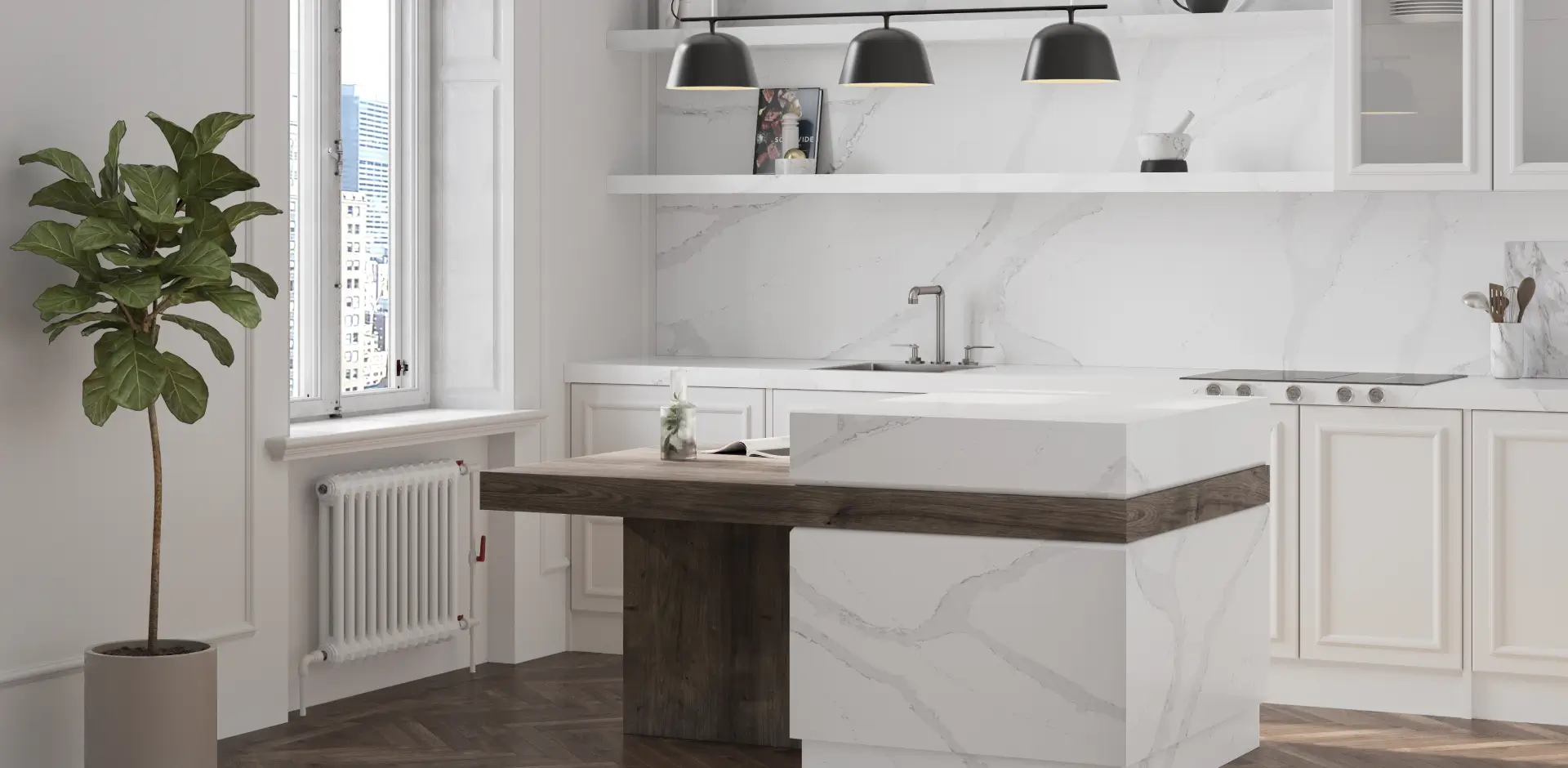
A mix of open and closed storage gives this kitchen a bit of soul — without too much clutter.
For wellness-focused kitchen design, choose your open and closed storage carefully.
Now, cutting back on clutter is key for a mood-boosting space. But that doesn’t mean everything needs to be hidden away. In fact, carefully curated decor and display is an important aspect of a kitchen that supports your health.
Do you have a beloved set of teacups? A wooden bowl your grandmother loved? Handblown glassware from a trip to Oaxaca? Meaningful items like this help us to keep precious memories front and center, helping us feel connected to happy times and places. So don’t be afraid to display them and integrate them into your kitchen design.
On the other hand, too much open shelving can create visual clutter — and make your space hard to keep clean. So finding the right balance of open and closed storage is key in your kitchen design.
Curate your colour palette to design a healthy kitchen.
The science is clear — the colors we surround ourselves with can have a profound impact on our mood and energy. From cabinets to wall color, even accessories, the colors we use in our kitchens can drastically alter how they feel.
- Warm colours like red and yellow stimulate energy and appetite and can make a space feel energizing and cheerful.
- Cooler colours like blue, green, and grey create calming energy in the kitchen.
- Dark colours create a sense of drama and intimacy.
- Lighter kitchens often feel more open, spacious, and welcoming.
- White creates a feeling of freshness and cleanliness and is a great way to start the day. White is also a great colour for kitchens because it’s essentially a blank slate, design-wise, letting you change out smaller details to update your kitchen’s colour palette over time.
While you might have a kitchen colour palette in mind, double-check that it’s aligned with the overall mood and energy you want to create in your space.
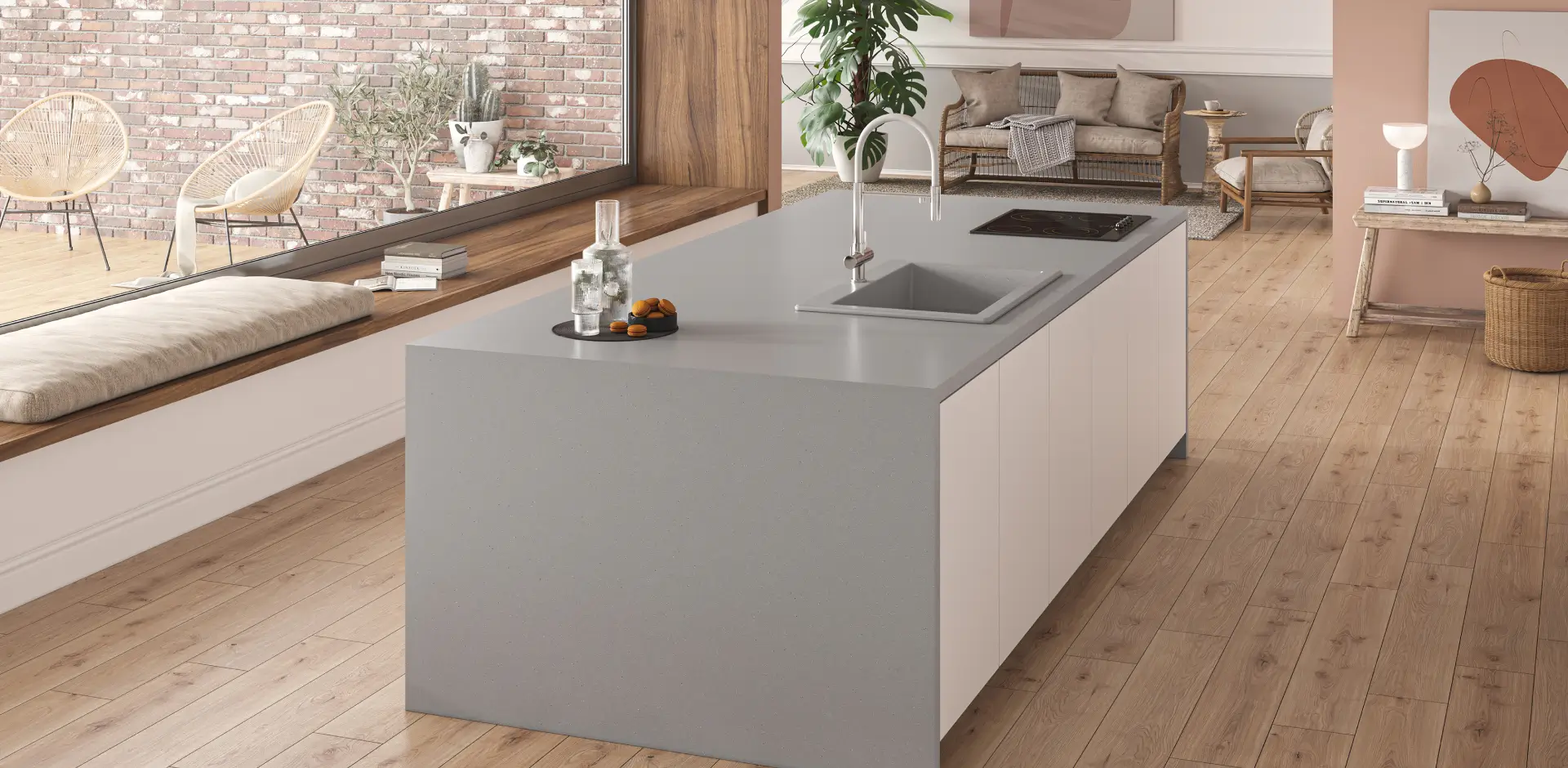
Ample sunshine and window seating makes this kitchen feel calm and connected with nature.
Want to design a healthier kitchen? Connect with nature.
Another amazing fact about design and our wellness? Nature-inspired spaces make us healthier. Even simple views of green space outside can improve our well-being.
As psychologists explore the impact of what they call “restorative environments” — those with even a minimal amount of green space — they’re consistently blown away by the results. “Even a glimpse of nature from a window helps. In one well-known study, for instance, [psychologist] Rachel Kaplan found that office workers with a view of nature liked their jobs more, enjoyed better health and reported greater life satisfaction.”
And this isn’t just in the office. “Roger S. Ulrich, PhD, director of the Center for Health Systems and Design at Texas A&M University, has found that nature can help the body heal, too.
In his most well-known study, Ulrich investigated the effect that views from windows had on patients recovering from abdominal surgery. He discovered that patients whose hospital rooms overlooked trees had an easier time recovering than those whose rooms overlooked brick walls. Patients able to see nature got out of the hospital faster, had fewer complications and required less pain medication than those forced to stare at a wall.”
In study after study, the results are clear: views of nature and greenery have a proud impact on our mental, emotional, and even physical wellbeing. So if we’re trying to create healthier, more restorative kitchens, nature views are a must.
Don’t have a great view? Don’t worry. You can bring the outdoors in. Biophilic design — creating man-made environments that are more closely connected with nature — has been shown to have tremendous benefits. An easy way to achieve this wellness benefit in your kitchen? Bring in plants.

“[Plants] give us a sense of being away; feeling relaxed, tranquil, and simply existing. And when introduced to sterile environments, natural elements can help in mental recovery and stress relief,” say the environmental experts at WeWork.
And it’s no small thing, either. In Sydney, Australia, one study found that employees with plants in their offices reported a 60% decrease in stress and overall negative feelings.
So what plants go best in your wellness-focused kitchen?
Here are a few of our favourites:
- Pothos — Low maintenance and quick growing, this is a great choice for beginners.
- Ivy — Another trailing beauty, this looks great on top of cabinets or open shelving
- Snake plant — This one does great even in low-light kitchens.
- Venus fly trap — A unique choice that doubles as pest control!
- Fresh herbs — Basil, thyme, and rosemary are great choices for an indoor mini kitchen garden. Plus, with these fragrant herbs at hand to add fresh flavour, you just might be inspired to cook at home a bit more!
Herbs require a bit more sunshine than some of the other plants listed above, but the good news is they take up minimal space. So if you’ve got a window ledge or a narrow shelf in a sunny spot, you have all the room you need for a small, lovely kitchen garden at home.
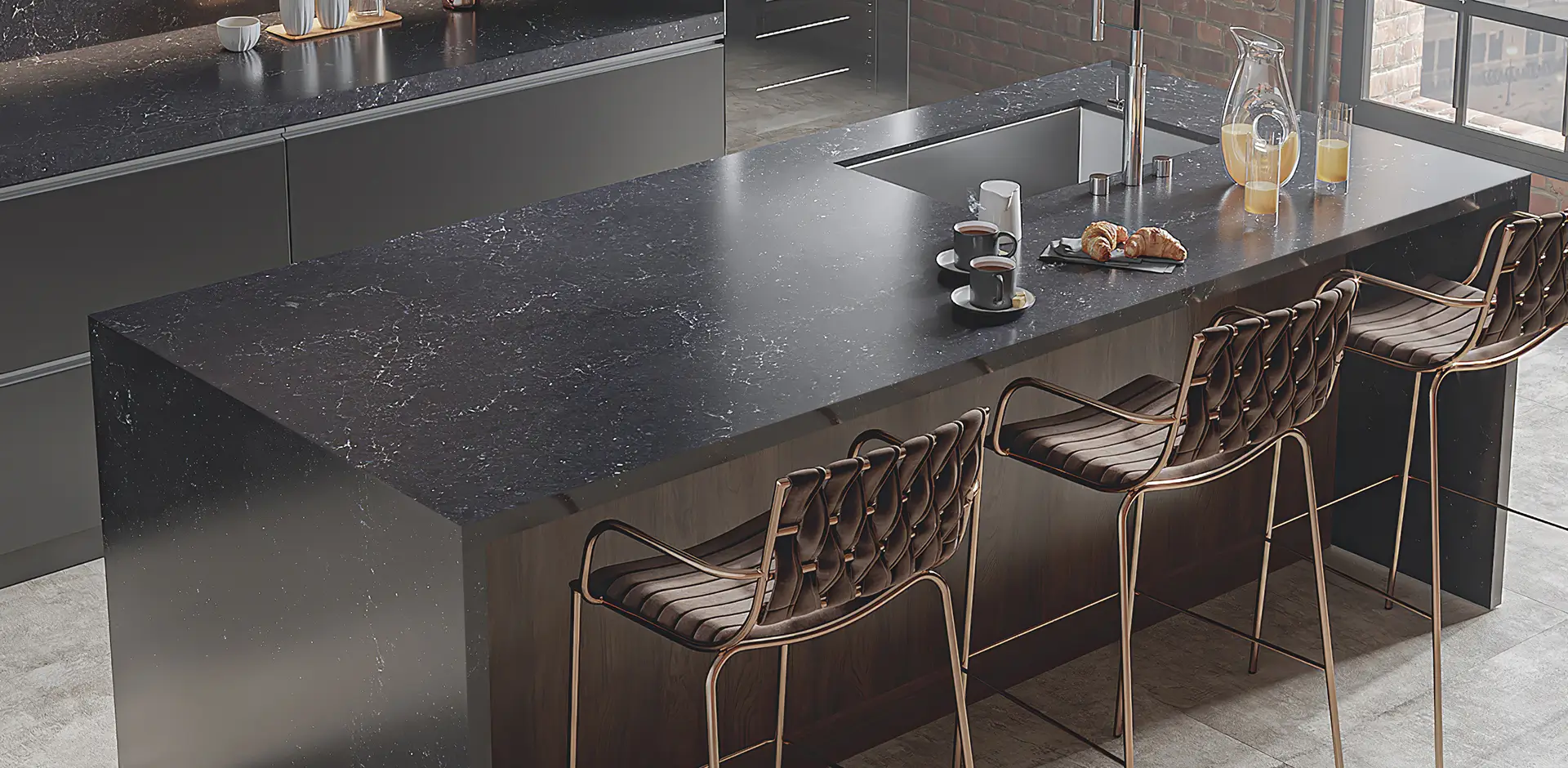
Deep and moody, this dark kitchen creates an intimate spot to unwind and entertain
For your healthiest kitchen, don’t forget about countertops.
No kitchen surface gets more use and more contact than your kitchen counters. So keeping them clean and beautiful is imperative to your and your family’s health and wellbeing.
Quartz countertops are naturally antimicrobial, antifungal, and antiviral — meaning germs can’t thrive on their surface the way they can on other materials. It also means harmful moulds and mildews don’t have a chance to grow.
Quartz countertops are also more durable than the majority of counter materials out there. Chip—, stain—, and scratch-resistant, you can invest once and know you’ll have beautiful counters for decades.
Not sure what style or colour feels right? Quartz is able to impressively mimic natural veining, with multiple styles that capture the movement and subtleties of Calacatta marble. Love the look of bright, airy white countertops? See some of our favorites here.
Or if a medium, soothing grey is more your style, there are plenty of gorgeous options there, too.
No matter your style, having a home that you love and that speaks to your personal taste can improve your overall health and wellbeing. So take some time, get inspired, and create a wellness-focused kitchen that’s right for you.
Love the idea of a luxurious kitchen update, but not sure if the budget allows? Check out this post for some great ways to bring affordable luxury touches to your kitchen.
You may also like
Sign Up For Our Newsletter
Subscribe to our newsletter to stay updated with the latest News, Case Studies etc.
[mc4wp_form id="779"]






